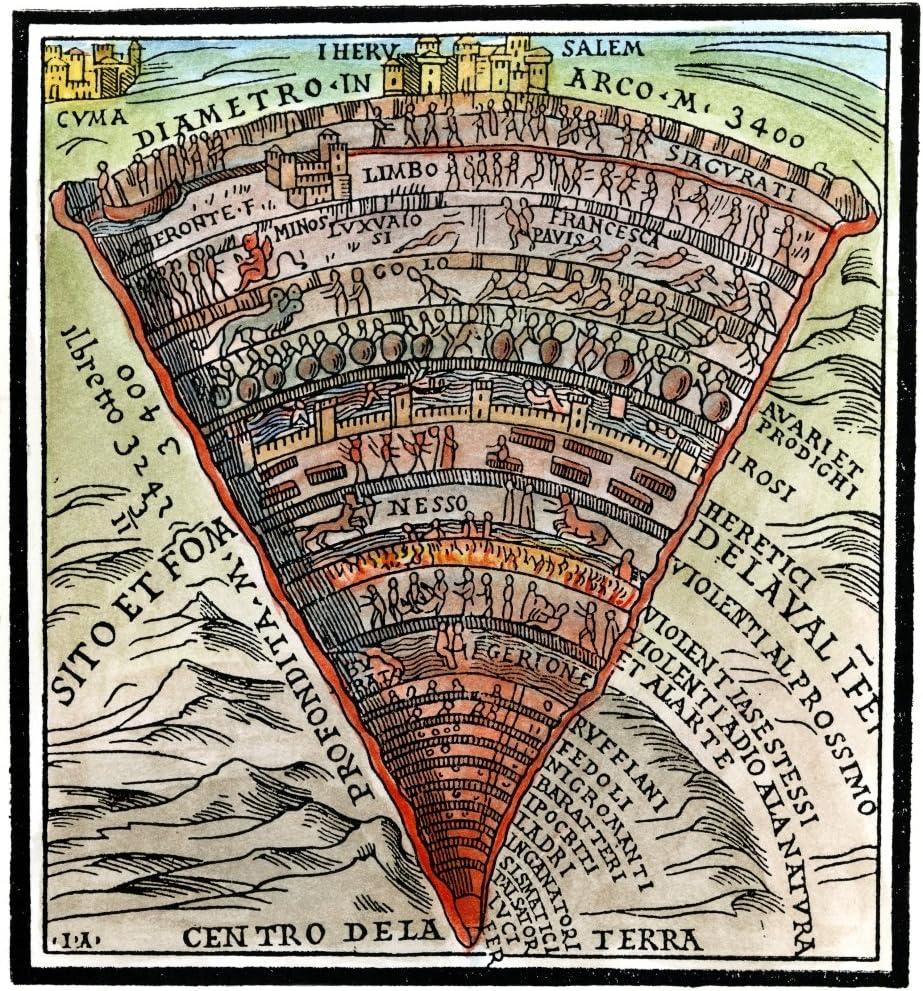Series: Dante’s Divine Comedy
Part I: Dante’s Inferno
Part II: Dante’s Purgatorio
Part III: Dante’s Paradiso
Inferno
Let this page act as your visitor’s guide to the realm of unimaginable suffering!
The Inferno recounts Dante’s journey through hell. Hell is a place reserved for souls that are irredeemable, sinners against the Divine Laws. It isn’t just a fiery pit, but has lots of structure and purpose to it. Let’s begin our descent into eternal torment!
The Forest
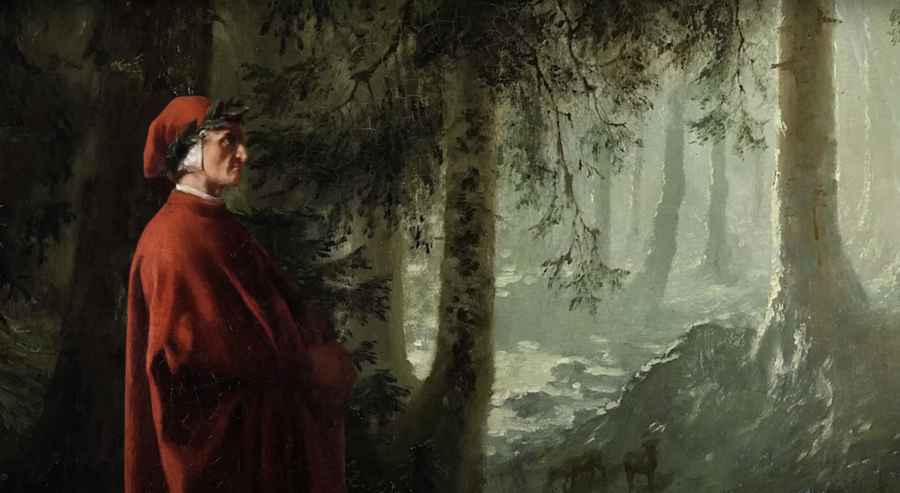
Our journey begins with Dante in a dark forest. He finds himself lost, both literally and metaphorically, as many of us also do throughout life. Ahead he spots a mountain, a possible way out, and makes his way towards it but is blocked by three beasts: A leopard, a lion, and a wolf. He retreats back into the forest.
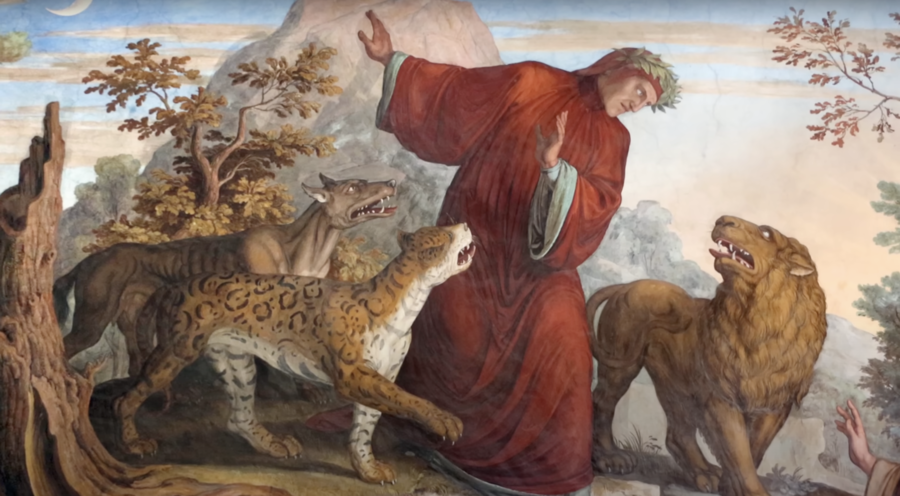
In the forest, he meets the ghost of Virgil, the ancient Roman poet, one of Dante’s greatest inspirations. Virgil was sent by Beatrice, Dantes departed wife who has been watching over him from heaven. Concerned about Dante’s soul, she sent Virgil to guide him to paradise - and back to her.
The road ahead will be far from easy - they will need to journey through the afterlife, beginning, of course, with Hell.
The Gates

Virgil guides Dante through the forest until they arrive at Hell’s Gates. Ascribed above the entrance is the classic line:
Abandon all hope, ye who enter here.
Ignoring the ominous warning, the pair ventures in and cross the River Acuron, now officially arriving at Hell itself.
The Circles of Hell
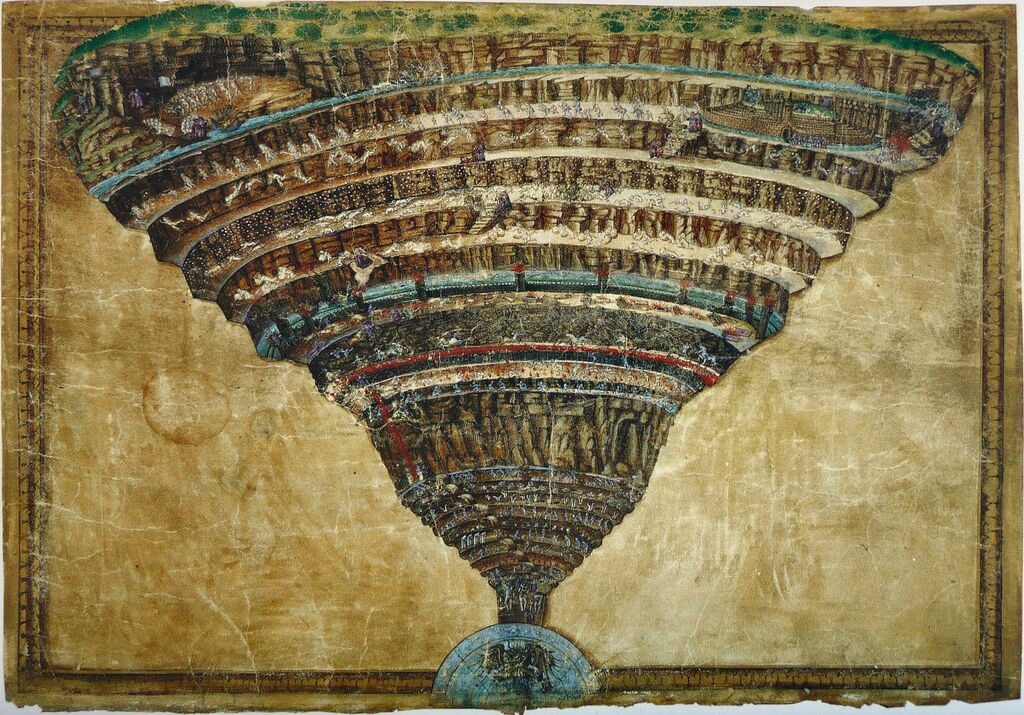
Dante describes Hell as a vast funnel, boring deep into the earth. It is formed of nine concentric circles, each reserved for a particular category of sin.
The further down one goes, the graver the sin, and the more horrific the punishment.
1) Limbo
Ahead is a quiet meadow shrouded in eternal twilight. Hell’s uppermost circle is actually rather peaceful, though it carries an atmosphere of sadness.
Limbo is the home of the “Virtuous Pagans”. These are good, upstanding people who just happened to live before the time of Jesus, thus never being able to know god and are forever forbidden from heaven.
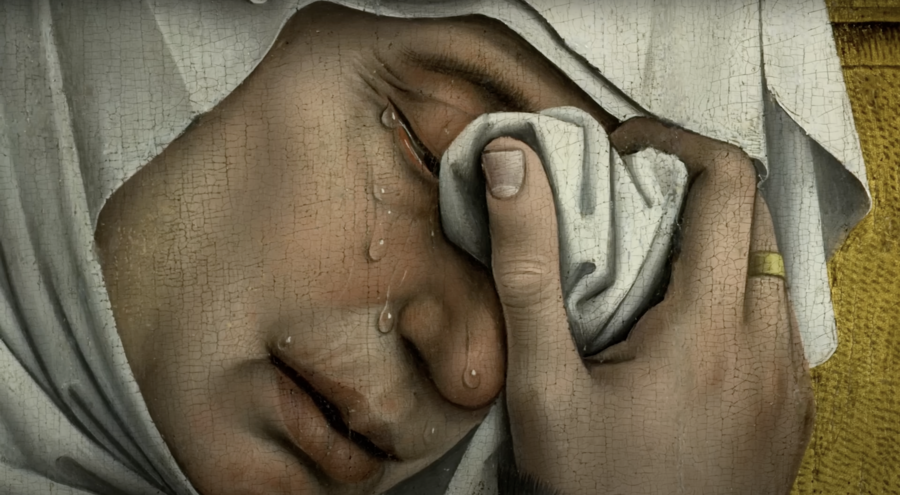
Dante encounters ancient scholars and figures here, including philosophers like Aristotle and Socrates, as well as the Roman Julius Ceasar.
There is a deep melancholy to those resigned to Limbo - perhaps even a sense of injustice. Despite having lived lives of wisdom and virtue, they are forever denied the joy and fulfillment of heaven.
But we must not linger, there’s plenty more Hell to see.
2) Lust
Now it is time for the actual punishments to begin! We begin with the adulterers, forever blown about and buffeted by violent relentless winds.
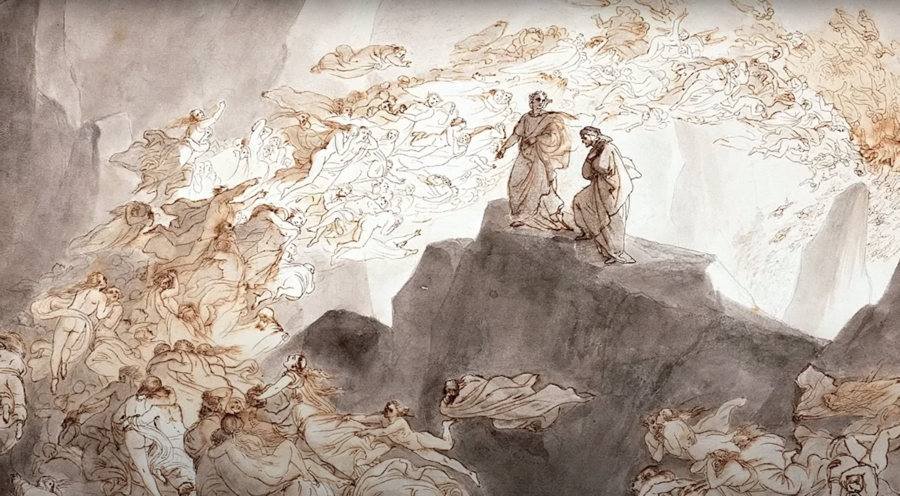
Just as they were carried away by their passions in life - they are now literally carried away by an unending storm in death. You’ll find that many punishments in Hell are a fun twist on the sin itself.
Here, Dante meets a woman named Franchesca who details how she has a love affair with her husband’s brother. It cost them both their lives and their place in heaven. The two lovers now reside here, forever trapped in the hurricane.
3) Gluttony
This realm is for those that overindulged - those that consumed and consumed without regard for their wastefulness.
The sufferers here reside in a cesspool of sludge and slime, doomed to grovel endlessly in thick, putrid mud. To make matters worse, they are also bombarded by an icy rain.
Their punishment is to wallow in the filth and waste of their own thoughtless excess.
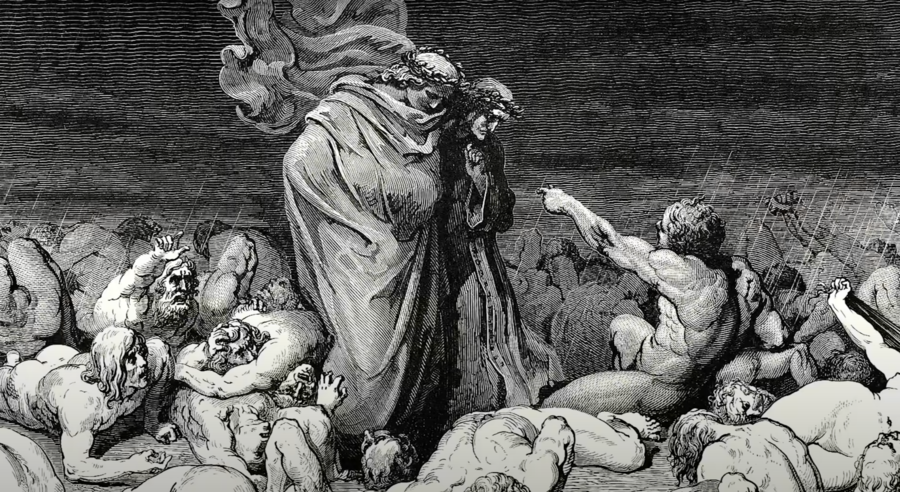
For some reason, Cerberus is also here - the three headed dog of hades from greek myth. Fortunately, Virgil already knows how to deal with him, and stuffs his three mouths full of mud, allowing the pair to pass by.
4) Greed
Greed may seem similar to Gluttony, but it is specifically those who crave an excess of wealth. Instead of consumption - hoarding.
Here the punishment is a futile eternal struggle. The souls here must roll massive boulders, clashing with one another in eternal conflict.

Among them are some members of the church. Clergymen who used their positions to amass great wealth through donations, rather than serving faithfully.
Dante makes it clear - no one is spared from Hell’s judgement. (Especially those that he himself disliked)
5) Wrath
The pair arrive now at the banks of The River Styx, the same river from greek myth used to cross over into Hades. Dante plucks it and inserts it into this hell.
Here, the souls of the angry are perpetually fighting on the surface of river itself. Wresting in putrid water, trying to push each other down. Beneath the surface are those who suppressed their anger in life, letting it fester and drown them.
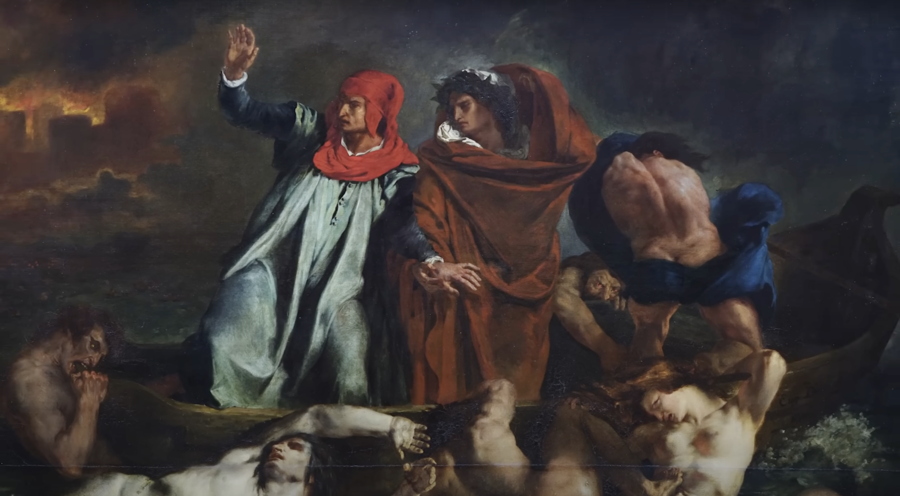
Their punishment is poetic. They are forever drowning in their own rage.
As they cross the river, Dante spots a political rival, Phillppo Argenti. He revels in watching his body be ripped to pieces by the others. Hey, no one said Dante had to be perfect either.
6) Heresy & The City of Dis
On the opposite bank of the River Styx is the great city of Hell - The City of Dis.
Fires light it’s crooked towers, forming a sprawling metropolis of pain and misery.
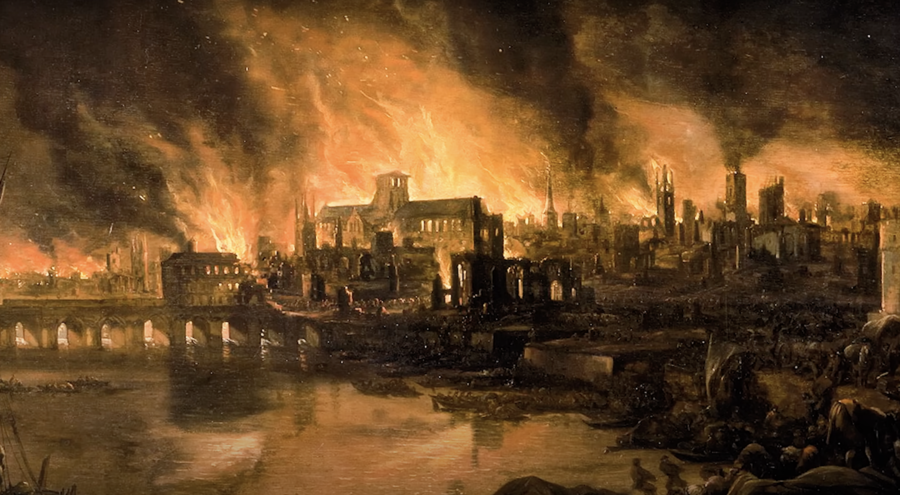 | 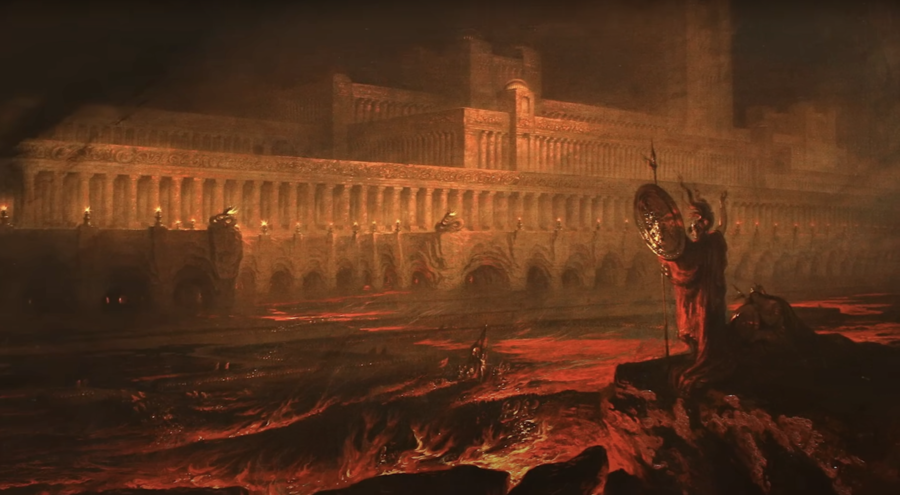 |
|---|
The city’s inhabitants are those that rejected the teaching of the church. They turned their backs to God.
For this they are trapped within burning tombs, where the fires of their heresy consume them forever.
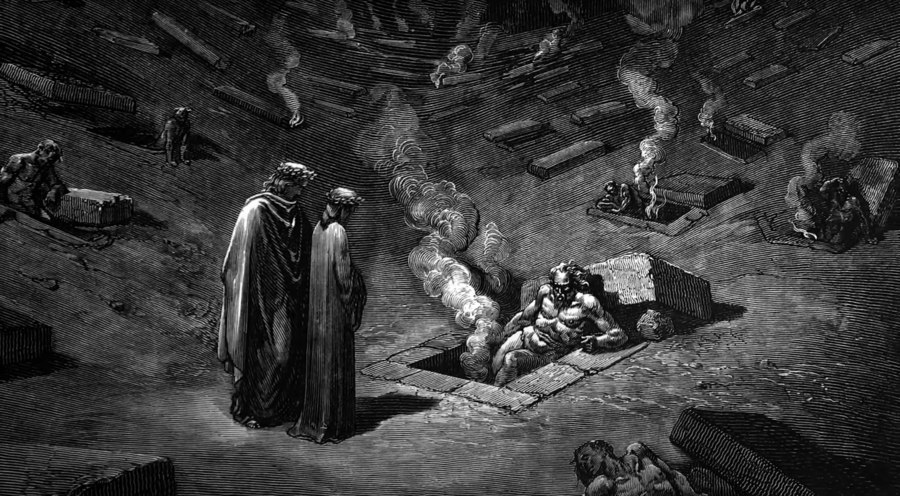
As Dante and Virgil walk through the city, they read the names on the heretic tombs. Kings, Rulers, Generals, Philosophers, Priests. There is no mercy for the unfaithful.
Dante, as expected, also noticed the names of many of his rivals among the condemned.
7) Violence
Continuing further into the depths, they arrive at circle seven. Violence is not the same as Wrath - Wrath is an emotion, and Violence is it’s action. It can take many different forms, so this realm is divided into 3 separate parts.
Violence Against Others
Those that harmed other people are submerged in a boiling lake of blood. The shores are patrolled by demonic centaurs with bows and arrows, ready to unleash fury upon anyone who tries to emerge from the surface. The depth they sink is determined by how violent they were. Alexander the Great is apparently in here.
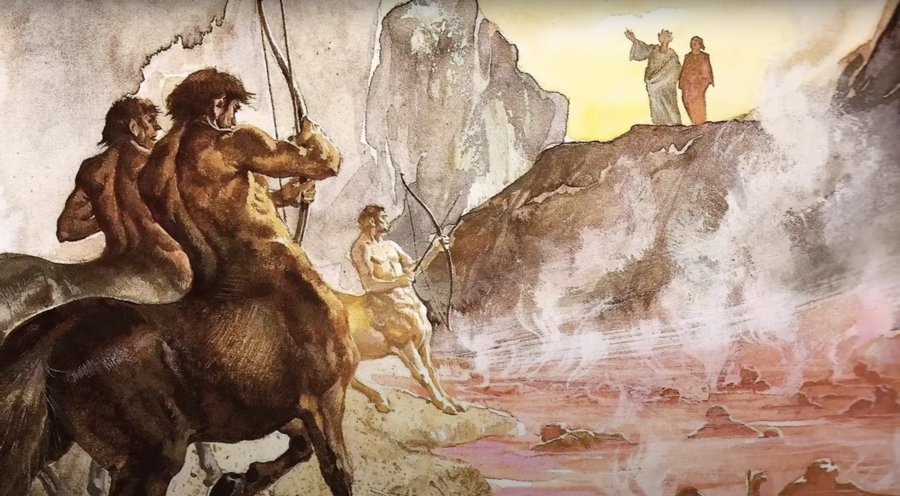
Violence Against Oneself
Those who harmed themselves are transformed into twisted gnarled trees, forming a eerie dark forest. Those who commit suicide will be found here, horribly deformed by their own hands. They are stripped of their humanity since they rejected it in life. Among the branch are the Harpies - vicious bird women - who tear at the flesh of the trees and cause them to bleed.
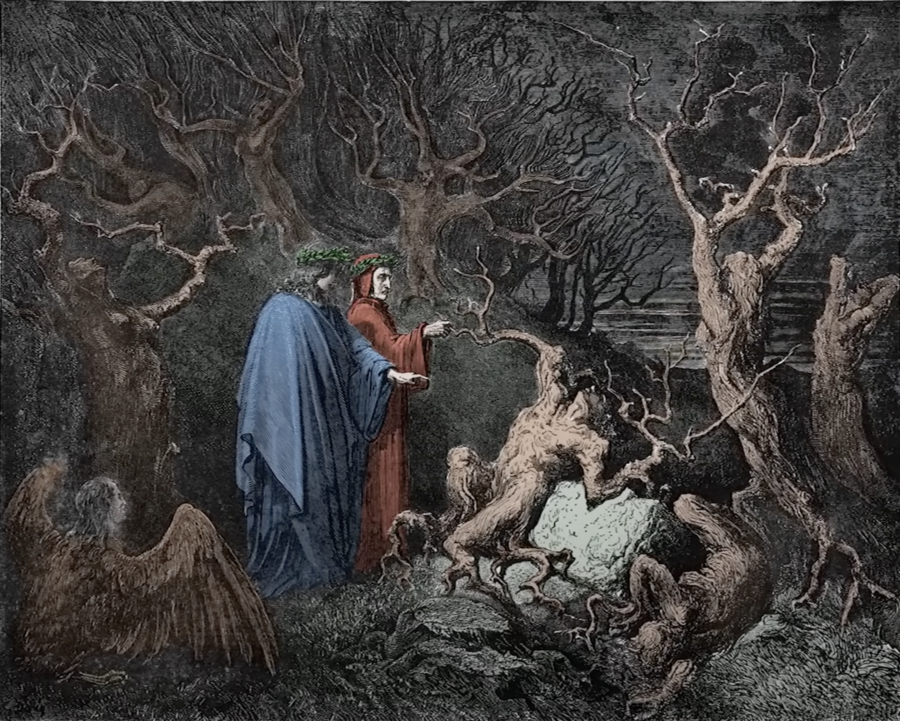
Violence Against God
Those who harmed God, through blasphemy and other acts of sacrilege are cast onto a plane of scorching sand and flaming rain.
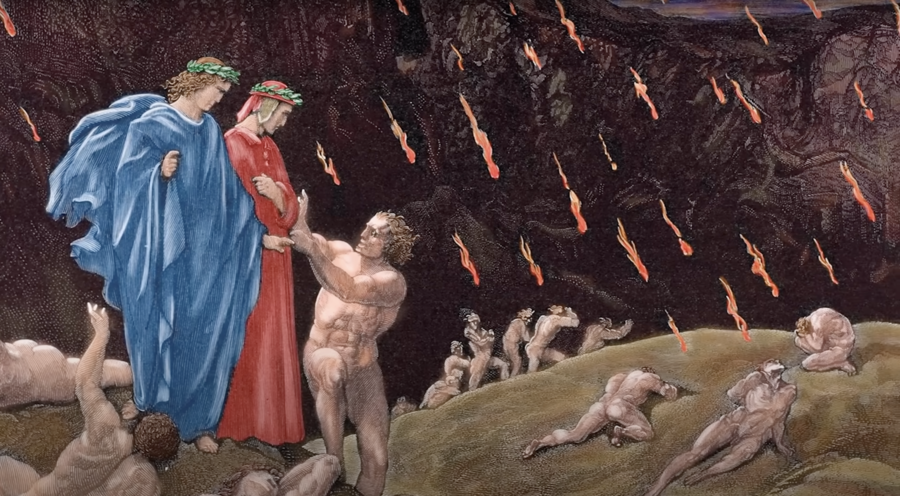
8) Fraud
While Violence is often acted out by passion in the heat of the moment, Fraud carries a certain calculated coldness that feels a lot more.. unforgivable. It is an intentional sin against all of society.
There is a chasm separating the 7th and 8th circles, so Dante and Virgil need to ride a creature called Geryon over to it. Geryon is the monster of fraud - having the face of an honest man, body of a serpent, claws or an eagle, and a scorpion stinger on it’s tail. It’s face hides the hidden danger behind, just like a fraud.
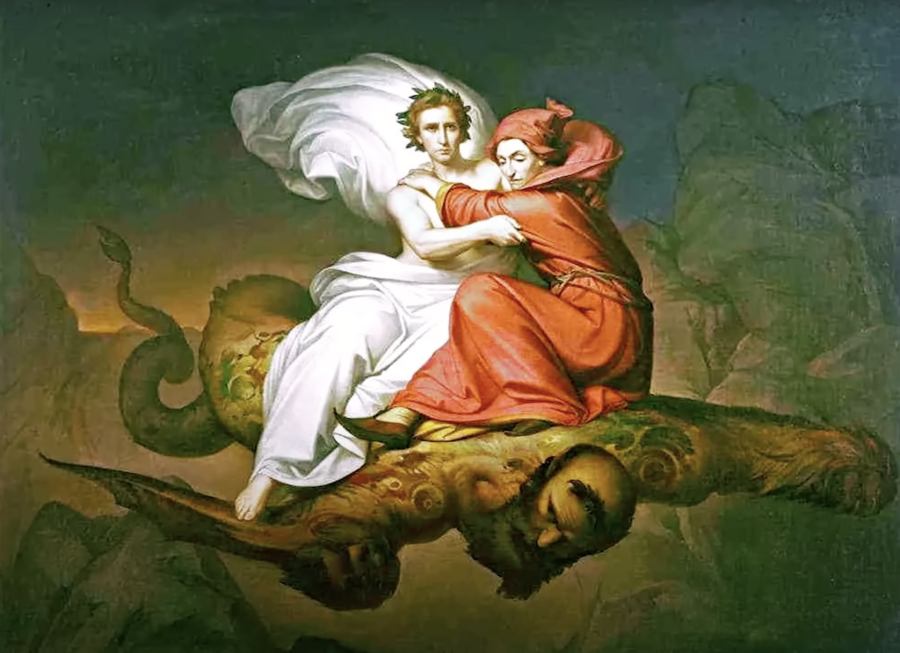
They arrive at the Malebolges - which when translated means the “evil ditches”. The eighth circle is also split up, this time into 10 separate ditches.
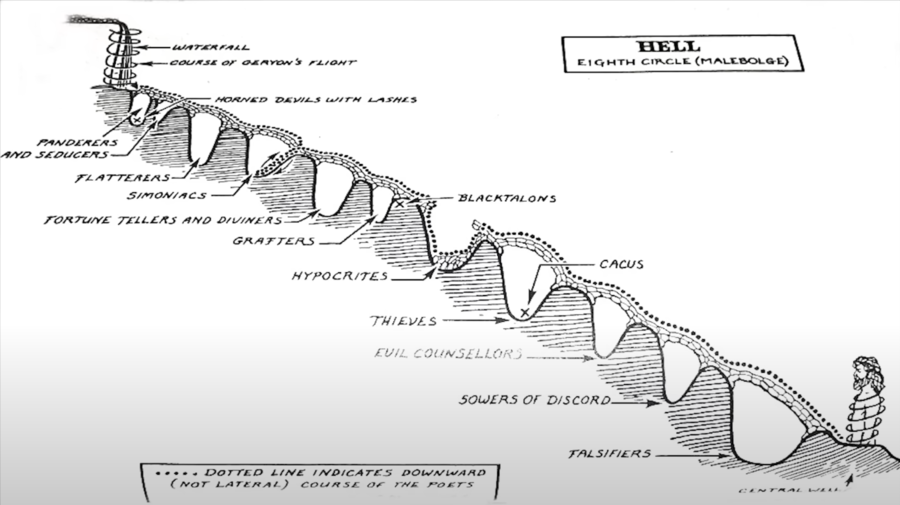
Let’s run through the ditches. This is the longest described part of the inferno - Dante clearly has a lot of enemies he needed to place here.
1) Panderers & Seducers
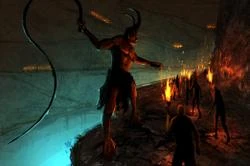
Forced to march endlessly in lines, they are whipped by horned demons. This is probably the most hardcore Hell imagery here, just getting whipped by actual demons.
2) Flatterers
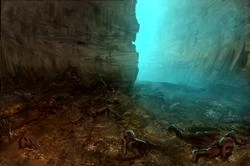
Immersed in a pool of human excrement - their false and dishonest praise was as worthless as the waste they now drown in.
3) Simoniacs
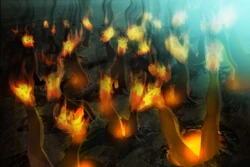
Simoniacs were the sellers of church positions - and they are doomed to be buried upside down in holes with their feet sticking out the top - set on fire. Even a Pope - Pope Nicholas III - is here for selling church pardons. Dante assures us the the Pope of his time, will surely follow.
4) Diviners
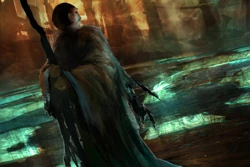
Or “Fortune Tellers”, had their heads twisted around and were forced to walk forwards while only being able to see backwards. They pretended to see the future in life, so are now made to only ever see behind, a mockery of their claim to foresight.
5) Politicians
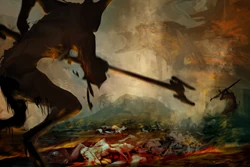
These are the corrupt politicians that used their position in life to enrich themselves at the cost of all others. They are thrown into a pit of boiling tar. Should they try to escape, a horde of demons called the Malebranche (“The Evil Claws”) with claws are barbs attack them - ripping them apart and tossing them back in.
6) Hypocrites
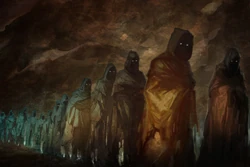
Forced to walk endlessly in a circle while wearing extremely heavy golden robes. These robes represent the nature of hypocrisy, appearing beautiful yet holding them down.
7) Thieves
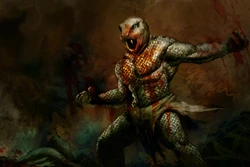
This ditch is guarded by the centaur Cacus, who has a fire breathing dragon on one shoulder. The thieves here are constantly bit and tormented by serpents, dragons, and other reptilian monsters. As they stole from others, here they have their very essence stolen by the monsters, transforming them into reptilian abominations.
8) Evil Advisors
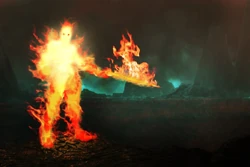
The souls that gave others corrupted advise for their own benefit are set ablaze, being nothing more that forever burning fires. The Greek hero Ulysses is here for creating the Trojan Horse and massacring the Trojans by this trickery.
9) Sowers of Discord

Those that promoted scandals and chaos are here, particularly within the church or politics. Here they march in a circle, and are hacked apart by a demon with a large sword. Because they can’t die - their wounds heal. By the time they walk back around they are fully healed, ready to be hacked apart once again, forever. The severity of the wounds match the sin in life. Some have their fingers removed, others are decapitated, and some still are completely disemboweled.
10) Falsifiers

The final ditch is for those that tried to alter truth itself through lies and deceit, or tried to pass false things as real. This ditch is subdivided into four parts for alchemists, impostors, counterfeiters and liars. They fester in all types of horrible disease here, just as they were a plague on humanity.
The Giants
At the very base of the eighth circle are the Giants - creatures of the ancient past that rebelled against God.
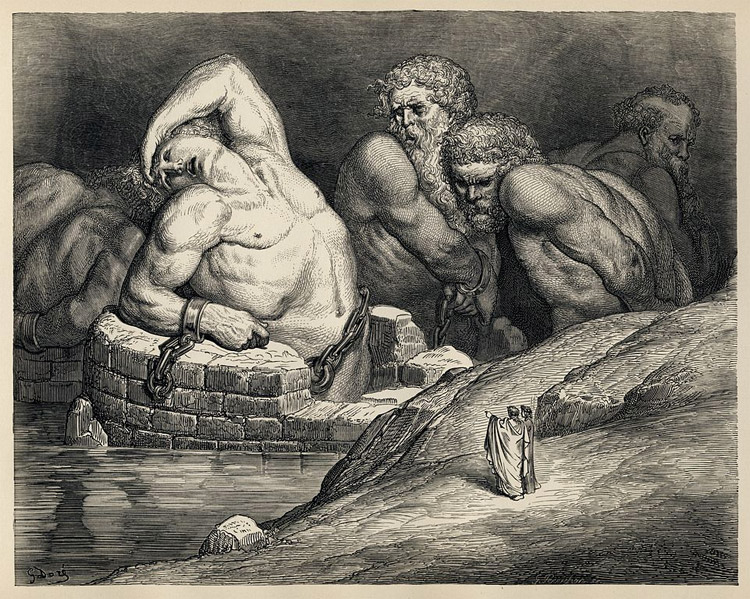
They are forever chained down here, and guard the entrance of the worst and final circle.
9) Treachery
The final circle of Hell is reserved for Traitors and Betrayers - destroyers of the most fundamental forces that hold everything together - trust, loyalty and love.
It’s very different than the places we’ve seen so far - it’s ice cold. Completely deprived of any and all warmth of God’s presence.
Dante and Virgil must navigate across a massive frozen lake called Cocytus, within which are countless frozen souls. The lake is divided into four distinct zones.
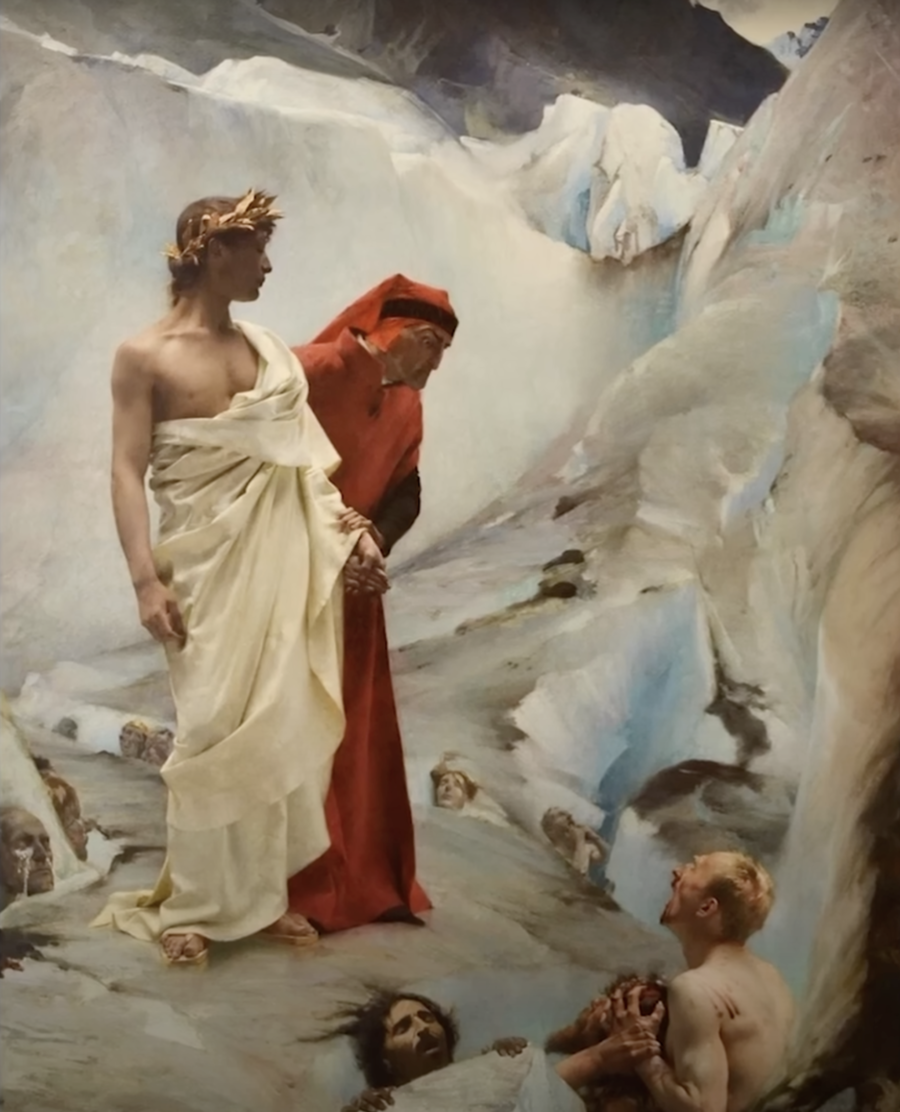
1) Caina
Traitors to family. Named after Cain, who killed his brother Abel. They are frozen up to their necks, with heads bowed over
2) Antenora
Traitors to Country. Named after Antenor, a Trojan who betrayed Troy. They are frozen up to their heads and can’t move them.
3) Ptolomea
Traitors to Guests. Named after Ptolemy, who murdered his guests. These souls lie on their backs, frozen with only their faces exposed. Their tears freeze in their eyes, forever weeping, but with tears that can never fall.
4) Judecca
Traitors to Lords. Named after Judas, the betrayer of Jesus Christ. They are completely frozen within the ice, twisted and contorted under the surface.
The Center
Finally we arrive at the very center of Hell, and at it’s center we finally see the main man himself - Satan.
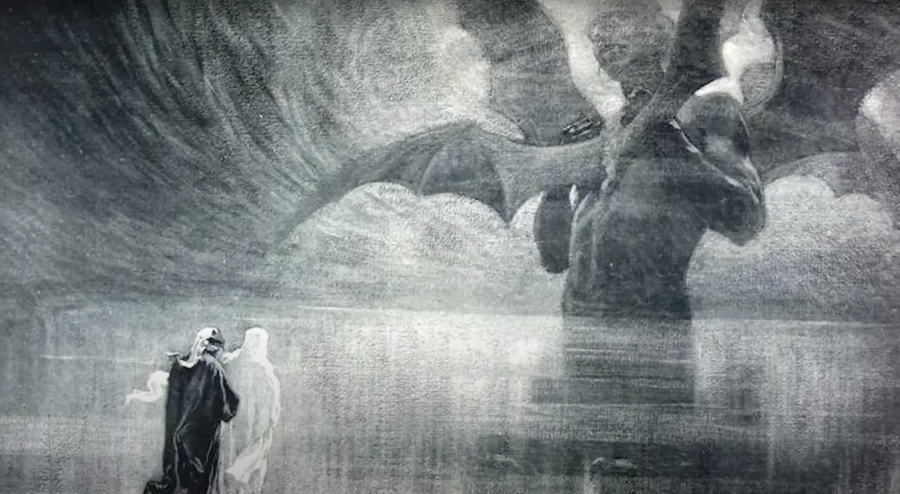
He is frozen from the waist down, with his great wings flapping, and possessing three heads, a cruel corruption of the holy trinity. He not the king of Hell in Dante’s story, but another prisoner. Helpless and trapped like everyone else, for his rebellion against God.
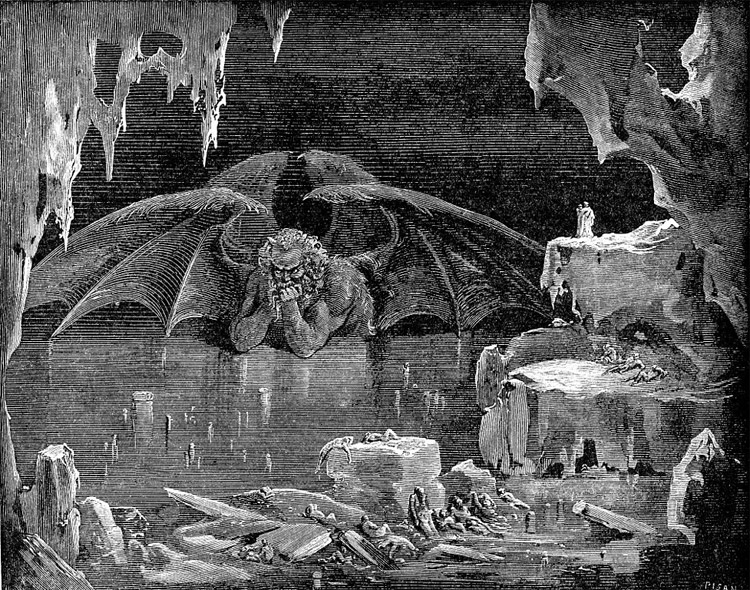
He is devouring three people, who Dante considers to be the three worst mortal traitors - Brutus and Cassius on each side - the betrayers of Julius Ceasar, along with Judas in the center - the betrayer of Christ.
They are being eternally eaten and chewed by Satan. Dante considers betrayal to be the worst sin of all, and Judas, as the betrayer of the Son of God himself, is the traitor. He earned himself the worst spot in all of Hell, being chewed and eaten by Satan forever - his head being crushed and his back being peeled by claws.
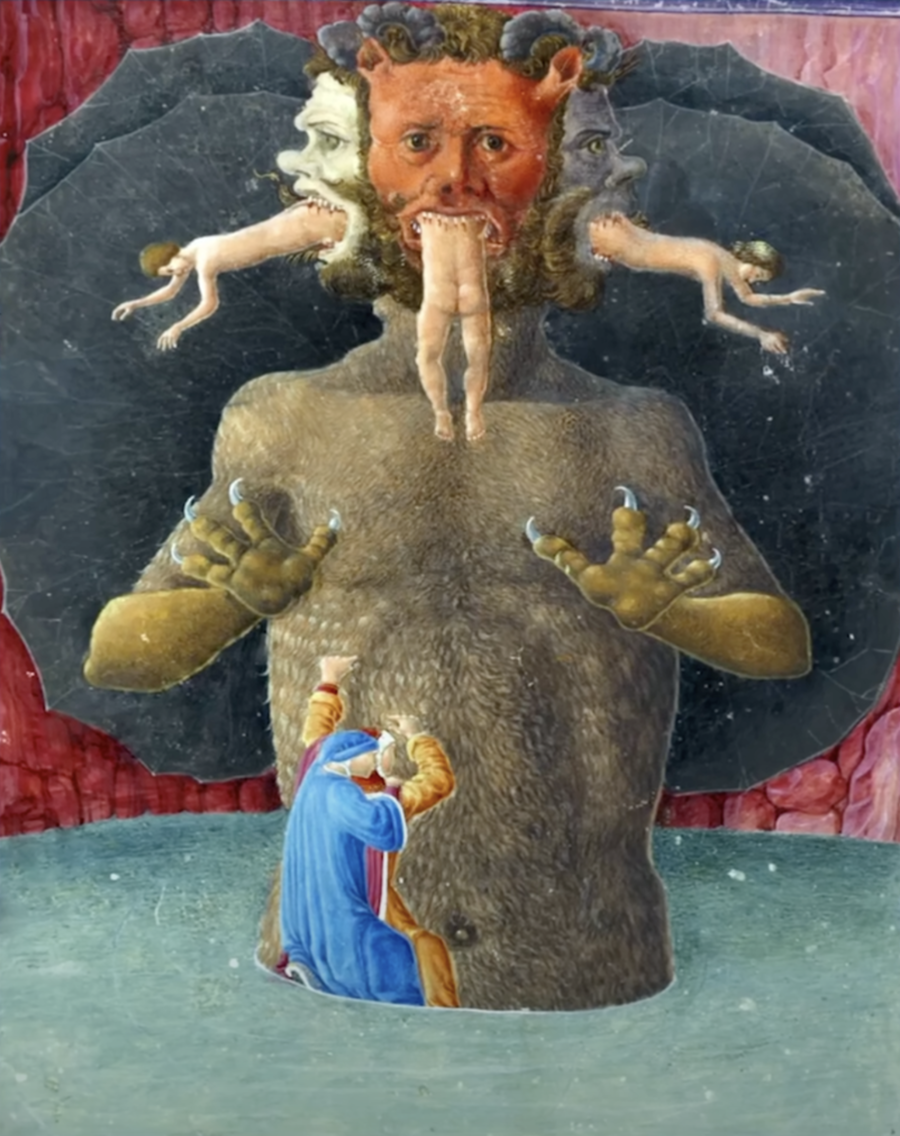
Escape
To leave Hell, Dante and Virgil climb down the body of Satan through the very center of the earth. After a long and grueling climb out the other side, they finally emerge at the base of a mountain in an endless ocean.
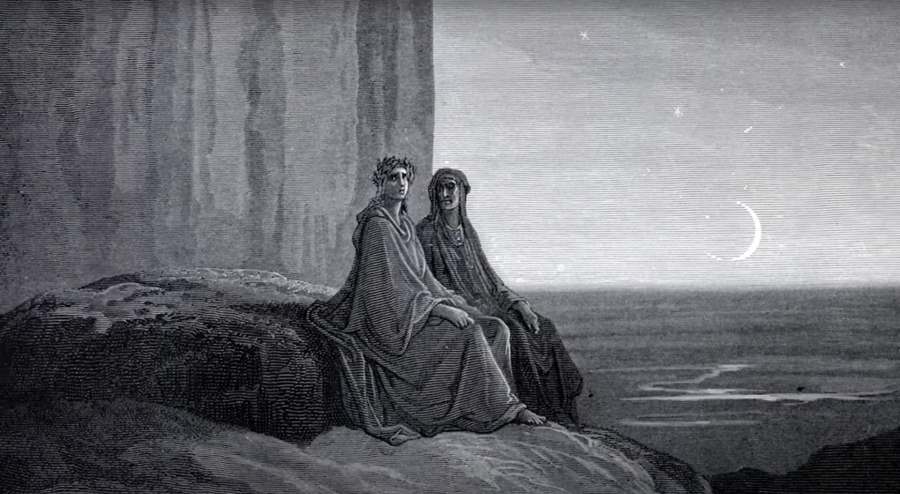
This isn’t just any mountain - it is the basis of Dante’s next story. Here ends the Inferno, the journey through Hell, but so begins another. This is Mt. Purgatory, in Dante’s Purgatorio.
Recap
We should now be able to recognize each circle on the map below. I hope you enjoyed your trip to Hell, please come again soon!
